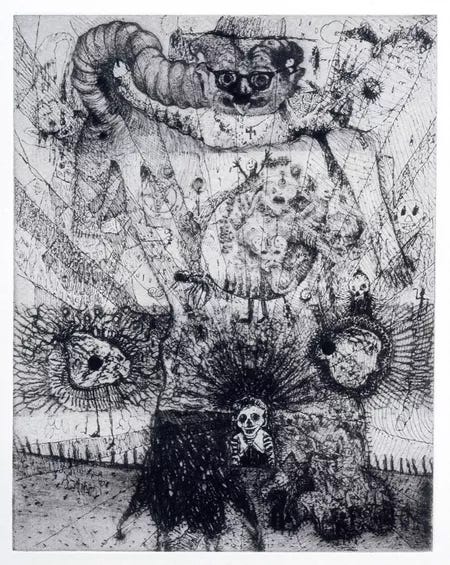Exquisite corpses, also known as "Cadavre Exquis" in French, is a collaborative artistic technique that originated in the early 20th century among surrealist artists. The term "exquisite corpse" itself evokes a sense of macabre fascination, yet the practice is far from grim. Instead, it embodies the whimsical and often playful spirit of surrealism, inviting participants to engage in a collective exploration of creativity and chance.
The concept of exquisite corpses emerged from the surrealists' desire to break free from conventional artistic constraints and explore the subconscious mind. Led by figures such as André Breton, Salvador Dalí, and Max Ernst, surrealism sought to tap into the hidden recesses of the psyche, embracing spontaneity, automatism, and the unexpected.
The process of creating an exquisite corpse typically involves several participants, each contributing a segment of a drawing, poem, or story without knowing what the others have produced. The result is a composite work that defies logic and coherence, blurring the boundaries between individual contributions and creating a sense of unified randomness.
In visual art, exquisite corpses often take the form of drawings or collages. Participants fold a piece of paper into sections, with each artist working on one section without seeing the others. The paper is then unfolded to reveal the complete, disjointed artwork, where disparate elements merge to form a surreal whole. These collaborative creations may feature fantastical creatures, nonsensical landscapes, or dreamlike scenarios, reflecting the surrealists' fascination with the irrational and the uncanny.
Similarly, in literature, exquisite corpses involve the collective creation of poems or stories. Participants take turns writing lines or paragraphs, concealing their contributions from one another until the final piece is unveiled. The resulting text is often characterized by abrupt shifts in tone, theme, and style, as each writer's voice blends with those of their collaborators to create a cacophony of voices and ideas.
The allure of exquisite corpses lies in their ability to transcend individual authorship and tap into the collective unconscious. By relinquishing control and embracing chance, participants open themselves up to unexpected juxtapositions and associations, allowing new ideas to emerge organically. In this way, exquisite corpses serve as a celebration of the creative process itself, highlighting the serendipitous connections that arise when artists come together in a spirit of collaboration.
Also, exquisite corpses offer a playful and inclusive approach to art-making, inviting participation from artists of all backgrounds and skill levels. By emphasizing process over product and fostering a sense of camaraderie among participants, they create a space for experimentation and discovery, free from the constraints of ego and expectation.
In today's digital age, the tradition of exquisite corpses continues to thrive, with artists around the world embracing new technologies to create collaborative works across geographic boundaries. Online platforms and social media channels provide fertile ground for virtual collaborations, enabling artists to connect, create, and share their exquisite corpses with a global audience.
Exquisite corpses represent a testament to the power of collective creativity and the transformative potential of collaboration. Through their playful exploration of chance and spontaneity, they challenge conventional notions of authorship and invite us to embrace the beauty of the unexpected. In a world that often prizes individual achievement and originality, exquisite corpses remind us of the joy and richness that come from working together to create something greater than ourselves.
Hi, thank you so much for reading. Sorry it may not be up to my usual standards, having to work on my phone to write as my laptop is dead!!Fancy buying me a coffee?That would be so awesome if you could and would help my work towards a new laptop.







Wow. Fascinating! Thank you.
Fascinating. These are new to me but you’ve certainly got me thinking!